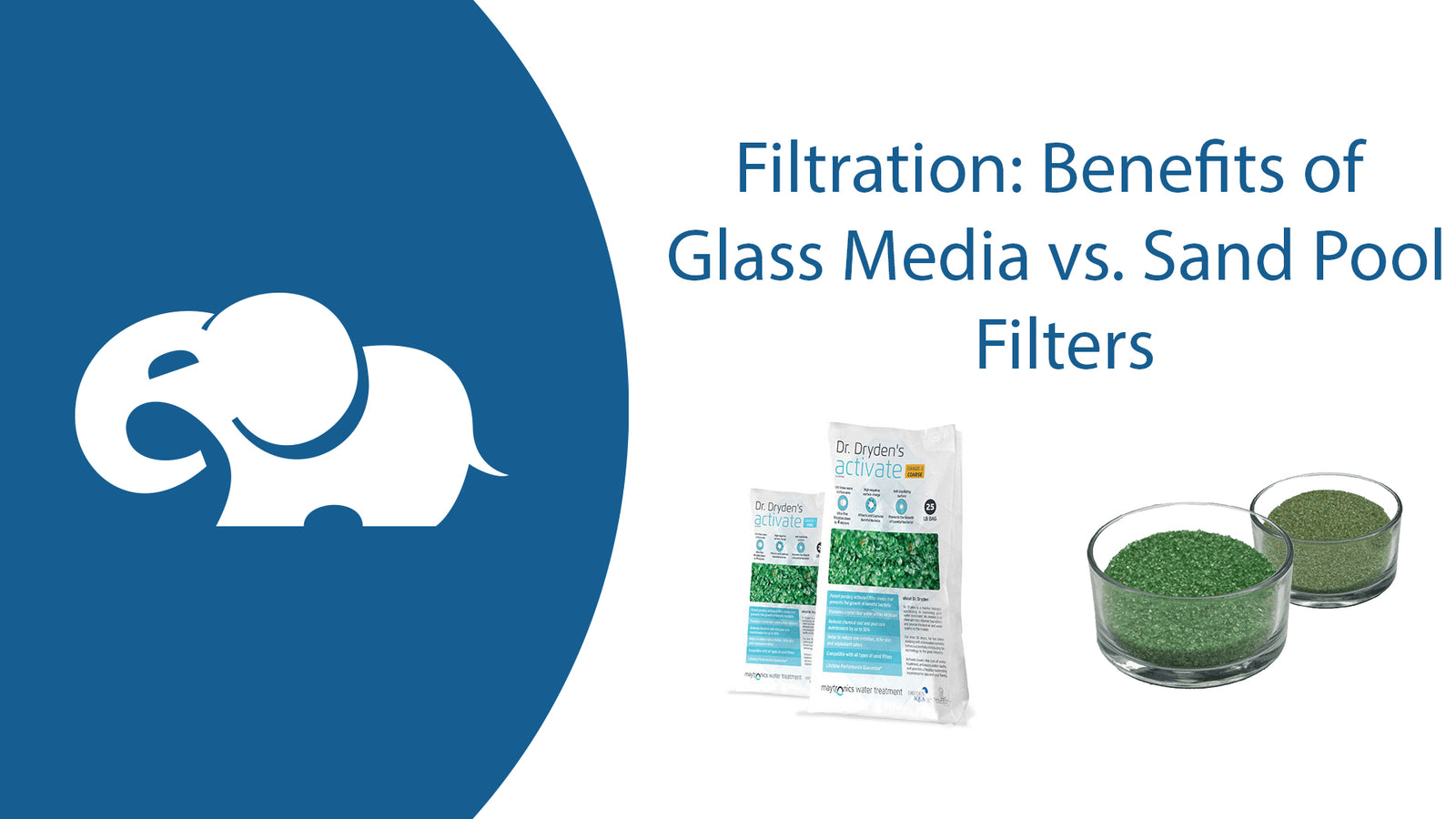Glass Media for Pool Filter vs. Sand Filters
What if we told you there is a way to never change the glass media in your sand filter again? Well, we know a way! Dive in with us as we take a closer look at pool filter media and compare regular sand filter media to glass and the pros and cons for each.
Sand Filter Media
We will get into the way glass media works further into our discussion, for now we’ll begin with sand. For starters, sand will filter particles down to approximately 30 microns. Another nice aspect of sand is the physical size and make up; filters require less sand than glass-based media because glass media is a more condensed, finer material. To build on that, you'll need less sand and end up spending less money up front to fill your pool filter's required needs. However, you will need to replace the sand every 2-5 years depending on use, pollutants, and overall quality of media.
Every sand filter will need a different amount of media so be sure to follow the Manufacturer's requirements listed in your owners manual for maximum efficiency. With that being said, both media work in different but similar ways. Sand causes pollutants and particles to collide and become waste to be expelled from your filter later with a maintenance backwash.
So, sand is the cheaper option to get the job done, right? Let us talk about glass media first and THEN you can decide!
Glass Filter Media
Initially, glass pool filter media was entirely made of recycled glass or unwanted bottles with more researched options evolving over time. Glass media is just that, a filter media made from silica or very fine particles of glass. So fine in fact, glass will filter as low as 10-15 microns with ease. Like we explained earlier, density and volume play a huge role in filtering soluble liquids. Because glass is not as dense as sand, it allows for smaller microns to be filtered, even performing as efficiently as a Diatomaceous Earth filter. The media also lasts eight years or more!! Some glass media users have reported never needing to replace the glass at all which is another huge advantage of having a glass-based media.
The glass media that does need to be “replaced” is actually cleaned, and then additional glass is simply added to the existing glass. We mentioned previously that sand attracts dirt, pollutants, and undesirable particles by becoming stuck to them. Glass works the same way except it is negatively charged which causes the pollutants to become attracted and stuck before being released on backwash. Because of the efficiency of this filter style less water is expelled and wasted from the filter which actually leads to lower run time, less water wasted and less of a bill overall. Add in the fact you will not need to shovel out $200 or more dollars every 2-5 years for sand while having to literally shovel sand and we would say glass pays for itself!
How to Add Glass Media to a Pentair TR100 Sand Filter
Check out the video below to see how the glass is added to a filter:
With the information found in this guide, you'll be able to better understand your sand filter and make an educated decision to help extend the life of your filter for years to come! If you have any questions regarding the information found in this blog feel free to reach out to us directly. Our team of Pool Professionals is here to help you through every step of the process. Otherwise, just keep swimming!

